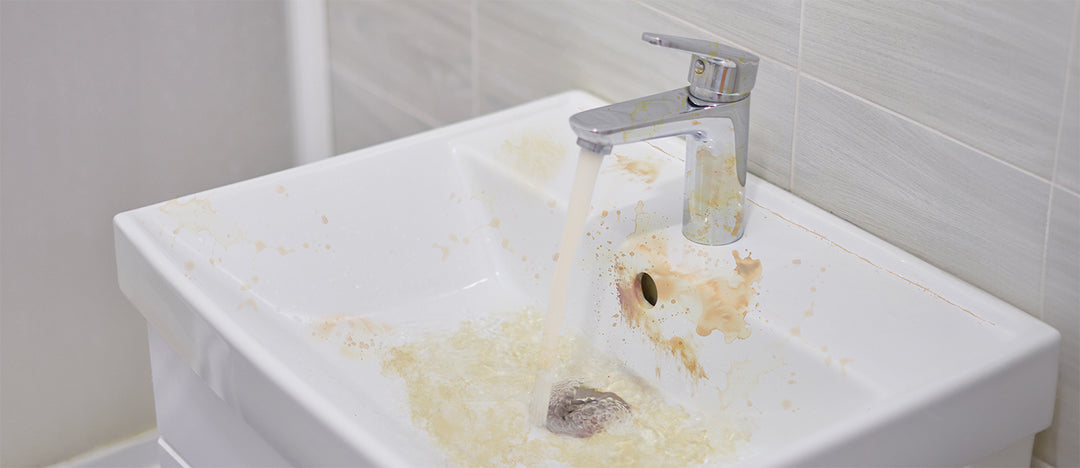Reducing PFAS Contamination in Drinking Water: A Comprehensive Guide
Table of Contents
- Introduction
- Understanding PFAS Contamination
- Health Risks Associated with PFAS
- Identifying PFAS Contamination
- Testing Your Water for PFAS
- Reducing PFAS in Drinking Water
- Choosing the Right Water Filtration System
- Conclusion
Introduction
PFAS (Per- and polyfluoroalkyl substances) are a group of synthetic chemicals widely used in industrial processes and consumer products. Unfortunately, PFAS contamination in drinking water has become a significant concern due to its persistence in the environment and potential health risks associated with exposure. In this guide, we'll explore the various aspects of PFAS contamination and provide practical tips on reducing PFAS levels in your drinking water.
Understanding PFAS Contamination
PFAS are known as "forever chemicals" due to their resistance to degradation. They can enter the environment through industrial discharges, wastewater treatment plants, and the use of PFAS-containing products. Once in the environment, PFAS can contaminate groundwater and surface water sources, posing risks to drinking water supplies. PFAS contamination is not limited to specific regions, with reports of contamination occurring worldwide.
Sources of PFAS Contamination
- Industrial discharges
- Landfills
- Firefighting foams
- Consumer products
Environmental Persistence
One of the most concerning aspects of PFAS contamination is their persistence in the environment. PFAS do not break down easily and can remain in soil, water, and air for extended periods. This persistence increases the likelihood of exposure and makes PFAS difficult to remove once they have entered the environment.
Health Risks Associated with PFAS
Exposure to PFAS has been linked to various health issues, including liver damage, immune system disorders, and certain types of cancer. The Environmental Protection Agency (EPA) has established health advisory levels for PFAS in drinking water to protect public health. Long-term exposure to PFAS-contaminated water can have serious consequences for human health, making it essential to address PFAS contamination effectively.
Health Effects of PFAS Exposure
- Liver Damage
- Immune System Disorders
- Cancer
- Developmental Effects
Identifying PFAS Contamination
PFAS contamination can occur in both public water systems and private wells. Individuals need to be aware of potential sources of PFAS contamination in their area, such as industrial sites or military bases. The Environmental Working Group (EWG) provides valuable resources, including a PFAS contamination map, to help individuals assess their risk. Additionally, monitoring water quality reports from local authorities can provide insights into PFAS levels in your area.
Signs of PFAS Contamination
- Unusual Taste or Odor
- Discoloration
- Foaming
Testing Your Water for PFAS
Testing water samples for PFAS contamination is crucial for identifying potential risks to drinking water quality. Certified laboratories can analyze water samples for the presence of PFAS compounds using specialized testing methods. Homeowners can also purchase PFAS testing kits to conduct their own water tests, although professional laboratory testing is recommended for accurate results. Testing your water for PFAS contamination allows you to take appropriate measures to address any issues and protect your health.
Steps for Testing Your Water
- Identify Testing Labs
- Collect Water Samples
- Submit Samples for Testing
- Review Test Results
- Take Action
Water Test kit
Determining whether your water is contaminated. Public water suppliers are typically required to test for contaminant levels, and the results should be accessible to the public. If you rely on a private well for your water supply, it's advisable to have it tested for all contaminants.
We know how important it is for you to make sure that your family and loved ones are healthy and safe, That's why REN Water partnered with HealthGuard Lab's a certified laboratory that utilizes advanced testing methods. HealthGuard Labs kits deliver precise and reliable results, ensuring you have accurate information about your water quality.
WATER TEST KIT
Reducing PFAS in Drinking Water
Several water filtration technologies can effectively reduce PFAS levels in drinking water. Granular Activated Carbon (GAC) filters and Reverse Osmosis (RO) systems are commonly used for PFAS removal. These filtration systems can be installed at the point of use, such as under the sink or at the whole-house level. When choosing a water filtration system, look for products certified to reduce PFAS levels by reputable organizations like NSF International. Regular maintenance of filtration systems is essential to ensure optimal performance and continued protection against PFAS contamination.
NSF Certification
When investing in water filtration systems, look for products certified by the National Sanitation Foundation (NSF). NSF certification ensures that a product meets strict standards for quality, performance, and safety. Choosing NSF-certified filters assures that the system is reliable and effective in removing contaminants from your water supply. This stamp of approval ensures that the product adheres to stringent quality and safety standards, making it a reliable choice for those seeking a water treatment solution they can trust.
Filtration Technologies for PFAS Removal
- Granular Activated Carbon (GAC)
- Reverse Osmosis (RO)
Considerations for Filtration Systems
- Filtration Capacity
- NSF Certifications
- Maintenance Requirements
- Cost
Choosing the Right Water Filtration System
When selecting a water filtration system to reduce PFAS contamination, it's essential to consider factors such as filtration effectiveness, maintenance requirements, and cost. Pentair offers a range of filtration products certified to reduce PFAS levels in drinking water, providing consumers with peace of mind and reliable protection. Whole-house filtration systems are ideal for addressing PFAS contamination at the source, while under-sink filters can provide targeted treatment for drinking water. Evaluate your specific needs and consult with a water treatment professional to determine the best filtration solution for your home.
REN Water's Advanced PFAS Filtration System With UV system, effectively removes PFAS/PFOS, rust, dirt, tastes, odors, lead, impurities, Sediment, Clarity reduction, Scale buildup, and Sterilizes bacteria and viruses, providing comprehensive filtration and purification for well water.
Filtration Products you could get
- Whole-House Filtration Systems
- Under-Sink Filters
- Reverse Osmosis Systems
Conclusion
PFAS contamination in drinking water poses significant risks to public health and environmental safety. By understanding the sources of PFAS contamination, testing water for PFAS levels using certified labs such as HealthGuard Lab's, and investing in effective water filtration systems like REN Water's Advanced PFAS Filtration System With UV system, individuals can take proactive steps to reduce their exposure to these harmful chemicals and ensure access to clean and safe drinking water. Remember to stay informed about PFAS contamination risks in your area and take action to protect yourself and your family from potential health hazards associated with PFAS exposure.





